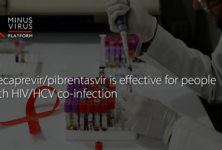Antiretroviral therapy (ART) has increased life expectancy by a decade in young Europeans and North Americans treated for HIV. Substantial declines in mortality emerged especially for those starting treatment between 2008 and 2010, pointing to the positive effect of evolving therapies and earlier detection.
Reporting in an article published online May 10 in the Lancet, investigators from the international Antiretroviral Therapy Cohort Collaboration reached this conclusion after examining 3-year survival and life expectancy rates in patients with HIV starting combination ART with at least three drugs during 1996 through 2013. The previously ART-naive patients came from 18 European and North American HIV-1 cohorts and were at least 16 years of age at study entry.
“These improvements probably reflect the availability of superior antiretroviral agents, more options for the management of patients developing resistance, fewer drug interactions, better management of opportunistic infections and chronic diseases, and introduction of screening and prevention programmes,” write the collaboration authors, led by Adam Trickey, a PhD student in the School of Social and Community Medicine at the University of Bristol, United Kingdom.
They recommend that prognostic models and life expectancy estimates be updated according to these new projections. “Information about life expectancy in people living with HIV and the knowledge that it could be approaching that of the general population is important to motivate at-risk individuals to test for HIV and convince those infected to start ART immediately, and might decrease stigmatisation of people living with HIV and help them to obtain insurance or employment,” Trickey and associates write.
The analysis comprised 88,504 treated patients, of whom 2106 (2%) died in the first treatment year and 2302 (3%) in years 2 and 3. With adjustment for age, sex, AIDS, risk group, CD4 cell count, and HIV-1 RNA, those who started ART in 2008 to 1010 had lower all-cause mortality in the first treatment year than those starting ART in 2000 to 2003 (adjusted hazard ratio, 0.71; 95% confidence interval [CI], 0.61 – 0.83).
All-cause mortality in the second and third years after initiation of ART was also lower in the later treatment cohort, with an odds ratio of 0.57 (95% CI, 0.49 – 0.67), a decline only partially explained by viral load and CD4 cell count at year 1, according to the authors.
The largest decline was in liver-related deaths during years 2 and 3 of ART.
During this time, markers of immune strength improved, with average CD4 cell counts after a year of treatment increasing from 370 cells/μL blood in 1996 to 1999, to 430 cells/μL in 2008 to 2010. The proportion of patients with a low viral load increased from 71% to 93%.
Overall, between 1996 and 2010, life expectancy in 20-year-old patients starting ART increased by about 9 years in women and 10 years in men. The expected age at death of a 20-year-old starting ART between 2008 and 2010 and having a CD4 count of more than 350 cells/μL at 1 year was 78.0 years (95% CI, 77.7 – 78.3 years). The authors note, however, that these survival improvements were less than reported increases of 15 to 24 years during similar time frames in other research. A 2014 study, for example, as reported by Medscape Medical News, projected a life expectancy of 80 years for a successfully treated 35-year-old man with a CD4 count of at least 350 cells/μL.
In terms of non-AIDS mortality, deaths over the course of 3 years were lower in the 2008 to 2010 treatment cohort vs that of 2000 to 2003: first year, 0.48 (95% CI, 0.34 – 0.67), and second and third years, 0.29 (95% CI, 0.21 – 0.40). Cardiovascular deaths in particular were substantially lower in the later cohort, possibly in part because of more aggressive screening and treatment of cardiovascular risk factors and increasing use of lipid-lowering medications, especially statins and reduced use of abacavir, which has been associated with CVD risk.
However, there was little mortality improvement among patients who used injection drugs.
Even with better survival, however, the life expectancy of patients with HIV remains lower than that of the general population. In addition, according to the authors, given the high efficacy and low toxicity of modern drugs, it is not likely that further ART development will affect the excess mortality.
“Instead, lifestyle issues that affect adherence to ART and non-AIDS mortality, and diagnosis and treatment of comorbidities in people living with HIV will need to be addressed,” they write. They stress the need to promote therapy to vulnerable populations such injectable drug users. “Improved access to opioid substitution treatment programmes and direct acting antiviral drugs for hepatitis C virus co-infection should be a priority for this group,” they write.
In an accompanying comment, Ingrid T. Katz, MD, MHS, an instructor of medicine at Harvard Medical School, Boston, Massachusetts, and Brendan Maughan-Brown, PhD, a behavioral researcher at the Southern Africa Labour and Development Research Unit at the University of Cape Town in South Africa, emphasize that despite improvements, a life-expectancy gap persists between HIV-infected and uninfected people, and some patients are being left behind. “Specifically, individuals who are not white, have a history of injection drug use, or began ART with low CD4 cell counts have no reduction in mortality or improvements in life expectancy,” they write.
They note that the international study’s findings are not likely generalizable to poorer countries in which access to ART is limited and patients with HIV face psychosocial barriers to detection, early treatment, and long-term care that undermine prevention and therapy in the test-and-treat era. In addition to persistent stigma, the inferior drugs and poor prognoses of the past have left a negative legacy for people in these countries. “Fear of medication-related side-effects is a leading psychosocial barrier to treatment initiation and has led to concerns that ART might actually make a patient sick,” they write.
Furthermore, survival will continue to improve, they caution, only if the issue of late HIV diagnosis is addressed. “As efforts are scaled up to detect asymptomatic patients, the challenge will be to link these individuals to treatment and to optimise adherence,” Dr Katz and Dr Maughan-Brown write. Intervention must increase awareness of the benefits of early ART and allay fears of drug toxicity, “especially in individuals who feel healthy and might perceive ART as more of an immediate risk than a benefit.”
This study was funded by the UK Medical Research Council, UK Department for International Development, and the European Union. Several study authors disclosed financial relationships unrelated to this research. The commentators have disclosed no relevant financial relationships.
Lancet. Published online May 10, 2017. Article full text, Comment full text
By Diana Swift


 ПОИСК ПО САЙТУ
ПОИСК ПО САЙТУ  поиск по ресурсному центру
поиск по ресурсному центру 



